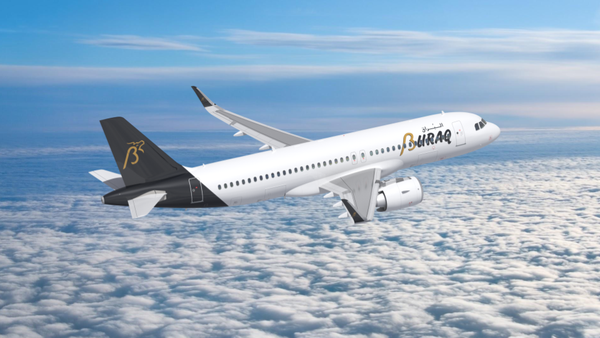Major North American carriers do not often get praise for innovation and positive flight experiences, and although there have been some hurdles in recent months, Southwest has been the popular choice for millions of Americans for 50 years. But why?
Southwest Airlines has, for a long time, been seen as the pioneer of low-cost airlines. Southwest helped the world be better connected by inspiring people to launch new, innovative airlines that challenged the long-standing legacy carriers and increase satisfaction, but most of all, drop fares consistently and significantly, putting pressure on existing airlines to deliver more on their promises.
So what is so unique about the airline?
At first, one might not notice the difference too much when comparing Southwest. However, upon closer examination, several elements of the travel experience are drastically different from most other airlines.

First, Southwest is one of the few airlines to provide free checked baggage: two pieces up to 50 pounds or 23 kilos on all fare types. Almost all legacy carriers charge for hold luggage when booking the cheapest economy fare, usually labeled as “Basic” or “Light.” But Southwest maintains the free checked bags, despite its opportunistic nature as potential ancillary revenue for the company.
Second, the airline is very different in that it does not conform to the nature of a typical low-cost airline as Southwest does not charge for everything. In fact, one could argue for the opposite and say that the airline is generous, providing free non-alcoholic beverages to all passengers and not selling food on board any flights.
Other airlines such as Ryanair, for whom Southwest was the inspiration, offer extensive buy on board menus for all passengers. Southwest also does not charge for a carry-on bag or, as previously mentioned, checked hold luggage. Furthermore, change fees do not exist and the airline even includes refundable fare types for purchase, something absent from typical budget airlines in North America and Europe.
The final unique aspects of Southwest are the seats and boarding process. Southwest flies only the Boeing 737, using the 700, 800, and MAX 8 in its operations across the United States and surrounding areas.

Onboard the flight all seats are created equal with the exception of exit rows which must have more legroom to allow for evacuations if required.
There are also no seat reservations whatsoever. Instead, the airline operates an open seating policy, a concept in which the airline is alone in, as to my current knowledge, no other airline in the world still offers open seating.
When a passenger checks in for a flight on Southwest, they will be given a unique letter and number combination. Letters A, B, and C are used and for each, the numbers are 1-60. So, examples of positions might be A47 or C9.
When the group with a specific letter is called, a line in numerical order of only that letter will form allowing for a consistent and easy boarding process for the airline. Then once on board, simply choosing any seat is the order of the day.

There are ways to improve your position as being in the C group will almost guarantee middle seats. Passengers can purchase earlier boarding at any time after booking.
In conclusion, Southwest is not the best or cheapest option for everyone, but if you are flying domestically in the United States and you wish to avoid budget airlines while still saving money, Southwest is the option to go for. Of course, this is all subjective and personal preference applies. Have you flown Southwest Airlines? How did it go? Tell me about it in the comments section below!
Attracting the Next Billion: The Psychology of "Free" in India's Digital Market » Buraq Air Expands Fleet with New Airbus A320neo Aircraft Order » VIDEO: IAF Tejas Crashes at Dubai Airshow »
Comments (3)
 4hSclOt1IN4hYnGp
908AKqx0usIRZGJOKikNeYnFotAQxIExr9Aa90YbCXzakerIfxKZgxqcloGSzPZ9KhRlJz4lSikP9cuIKiMop15XIoKRP9uzdpn8bops79ftQHPMejRSpkicNYmBmejMvwWzbnnUgTmZNlYLplJJqx6ohdQ8
4hSclOt1IN4hYnGp
908AKqx0usIRZGJOKikNeYnFotAQxIExr9Aa90YbCXzakerIfxKZgxqcloGSzPZ9KhRlJz4lSikP9cuIKiMop15XIoKRP9uzdpn8bops79ftQHPMejRSpkicNYmBmejMvwWzbnnUgTmZNlYLplJJqx6ohdQ8
 AmyAubin
hello
AmyAubin
hello
 AmyAubin
hello.com
AmyAubin
hello.com
Add Your Comment
SHARE
TAGS
STORIES Southwest Airlines Southwest Boeing Boeing 737 Travel Low Cost Carrier AviationRECENTLY PUBLISHED
 Attracting the Next Billion: The Psychology of "Free" in India's Digital Market
To successfully attract this audience, one of the most powerful psychological tools in a marketer's arsenal is the concept of "free," particularly in the form of "no-deposit" offers.
INFORMATIONAL
READ MORE »
Attracting the Next Billion: The Psychology of "Free" in India's Digital Market
To successfully attract this audience, one of the most powerful psychological tools in a marketer's arsenal is the concept of "free," particularly in the form of "no-deposit" offers.
INFORMATIONAL
READ MORE »
 VIDEO: IAF Tejas Crashes at Dubai Airshow
An Indian Air Force (IAF) Tejas has crashed during a display at the Dubai Airshow today, November 21. At approximately 2:15 p.m. aircraft was performing a maneuver when the accident occurred. The pilot's condition is currently unknown.
NEWS
READ MORE »
VIDEO: IAF Tejas Crashes at Dubai Airshow
An Indian Air Force (IAF) Tejas has crashed during a display at the Dubai Airshow today, November 21. At approximately 2:15 p.m. aircraft was performing a maneuver when the accident occurred. The pilot's condition is currently unknown.
NEWS
READ MORE »
 Buraq Air Expands Fleet with New Airbus A320neo Aircraft Order
Buraq Air has made a significant commitment to expanding its fleet with an order for 10 Airbus A320neo aircraft, reflecting its focus on modernization and sustainability in the aviation sector.
NEWS
READ MORE »
Buraq Air Expands Fleet with New Airbus A320neo Aircraft Order
Buraq Air has made a significant commitment to expanding its fleet with an order for 10 Airbus A320neo aircraft, reflecting its focus on modernization and sustainability in the aviation sector.
NEWS
READ MORE »



